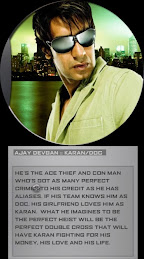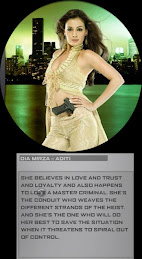To what extent is Bollywood subverting the dominant male and increasing the significance of the women to match our ever developing non-patriarchal society.
Cinema arrived in India on July 7th 1896 [1] in the city of Bombay (now Mumbai) where 6 short films of the ‘Lumiere Brothers’ were shown, the ‘Lumiere Brothers’ were among the earlier filmmakers in cinema. After introducing films to India, pioneering filmmaker ‘Dadasaheb G Phalke’ was the first person who made the nations first feature film called “Raja Harishchandra” [2] (King Harishchandra) in 1913, based on the stories of Mahabharata; it gave recognition to the Indian mythology. Mahabharata [3] was about kings, princes’, gods and goddesses. In theses sacred texts male protagonists were mainly involved in the Indian mythology, where action such as wars and battles took place. However female protagonist would be the goddesses who had no particular role and wives of soldiers, servants or just be entertainers for the riches. Female protagonists were not given any importance compared to men, the myths strongly focused on male characters due to religious idolisation, however we did have odd soft roles, that would be the Kings lured by queens, this showed that women were sexually active rather playing a resourceful role.
At the end of the day ‘Phalke’ was a male film maker and this was all his production, so ideologies that came across were patriarchy. The ideologies that occur showed that the British colonialism had influence over India; there had been a patriarchal approach over India, where only men had governed the whole of India.
The Indian feminist theorist ‘Gayatri Chakravorty Spivak’ post-colonial critic argued that “hegemonic historiography” was wrong, due to the ruling class that is British colony had told the history through their point of view rather than the Indian nation, therefore Phalke had shown a general view of the Indian culture and belief in his films.
Bollywood commonly referred as Hindi cinema shares the largest part of the Indian Cinema. It creates the main phase of the Indian film industry compared to Tamil, Telugu, Malayalam, Bhojpuri, Kannada, Kashmiri and Marathi film industry. Although Bollywood’s birth was in 1913, the 1950s were the golden age of Indian cinema. Bollywood ruled supreme with male actors- Dilip Kumar, Dev Anand and Raj Kapoor and female actresses- Nargis, Madhubala, Vyjanthimala and Meena Kumari becoming gods and goddesses of Bollywood.
Hindi Cinema started to get its real shape in the late 60s and 70s. We started to see male protagonists who started to get more authentic, gritty roles, moving on from Mythologicals such as Mahabharata, historicals about war, social issues after partitioning of the country and corruption, romances, now to action thrillers. Development of male roles made them active than ever before. Male roles had changed over time and male significance became stronger, reflected from “India’s growing confidence in its own destiny and influences creeping in from Western culture.” [4] The Indian film star Amitabh Bachchan stated “I believe leading men in Hindi cinema are modern manifestations of great heroes of Indian mythology. They are always invincible and they always win in the end” [5] Here Bachchan reinforces the idea of the man in film being more vital and that man had always ruled because they win in the end.
Hero roles have changed over the years; perhaps these changes reflected both India’s growing confidence in its own destiny and influences from the west. This may have happened because the industry want to be update with what the audience expect the character to be like-nowadays being a bit more ‘Masada’ type; in the 1930s heroes often played a gentle romantic role, which endured love and romance. In the 1940s the concept of anti-hero was introduced, e.g. ‘Awaara’ (1951) in which the anti-hero Raj Kapoor turns away from crime and violence when he is redeemed by the women he loves. Later on in the 1960s heroes became more confident, stronger and physical which had showed some greater sex appeal. In the 1970s Hindi filmmakers gradually became more interested in action thrillers e.g. in ‘Zanjeer’ (1973)[6] Amitabh Bachchan who had played a role of a cop who takes the law in his own hands, to avenge the murder of his parents and other crimes.
Heroine’s representations in films are mostly through Romantic roles, as she is shown beautiful, elegant and charming. Heroines are mostly shown sacrificing anything for their love or destiny. They connote innocence but also wanting to show more sex appeal. Female roles were easy recognisable as heroine roles did not change over time, heroines would be young, beautiful, shapely, have an expressive face and able to dance.[7] The heroine would play a virtuous innocent role. Typically Within the narrative the heroine would be dependent on a patriarchal figure this traditionally would be the father or the husband after marriage. We would stereotypically see them as housewives working in the kitchen, or raising up the children whereas the man would be out to work making and bringing in money to the house. Idolisation of husband or father would be there for respect, this shows that Bollywood has always been a true reflection of the Indian/Asian culture, because women always respected her Father and later her husband, she had to be prepared to transfer her allegiance to another male in her life. This meant that the daughter/wife had obeyed man all her life, this supports the patriarchy in the Asian society and so films had adopted this value. Bollywood is a true reflection of the Asian culture, typically the man worked hard and brought money in to the household whereas the women brought up children, played as a good housewife and respected her husband.
Isolated females were shown in films such as ‘Shaan’ (1980)[8] where Sunil Dutt a brave police man, worked hard for his country and his wife Rakhee played as a loyal housewife, looking after their child. Another text that can be referred to the isolation of women would be ‘Khandaan’ (1965), this story is about one man Sunil Dutt who is the only money maker in the family who brings money in home, Nautan a female protagonist which reinforces the cliché, taking care of the family again being the housewife. However a film called ‘Bobby’ (1973) subverted the cliché. We saw two families where one being poor and the other rich, the females of the rich family were never seen at home, they would be partying out or going to kitty parties especially the mother, this showed that they were active in the sense of going out and about, otherwise they did not have an any importance in the movie, this then kept the man in dominance 'Pran' who plays the rich father, allowing his wife to party out but be able to respect him. Although the female were known for ‘Expressive leaders’[9], where they kept all the family together, taking care of children, carrying out domestic duties, making food and loving everyone. Due to the same role being shown over and over again it created the cliché.
Mughal-e-Azam (1960)[10], the greatest epic saga set in the 16th century about a Badshah (Emperor) Akbar the supreme ruler of Hindustan[11] (India). The film covered certain social issues such as the emperor wanted the Hindus and Muslims to live as a big family, where Pakistan and India were one big nation. The emperor’s son Saleem willingly falls in love with a courtesan. This fervour and intensity of Saleem’s actions perpetrates a war between him and his father the great Mughal Emperor Akbar. Anarkali the courtesan is a low class girl who is an entertainer for the rich, all women for the rich were just dancers and performers that kept the Rich entertained, it portrayed that hegemony was present in the 16th Century. The film reinforces the male dominance where one man rules India. It portrayed that there are so many different characteristics of man, whereas we had only seen one female protagonist which would be an entertainer, this summed up that women did not have diverse roles, which backs up my argument that pre-1990 female roles compared to present time receive diverse roles which is getting them the importance and subverting the typical male dominance.
Mother India (1957)[12] this film is about a Mother- who can be portrayed as a survivor against struggles and difficulties that she has to confront throughout her life despite anything happening to her family, especially her children. She is, loved so much by her son (the hero). One of the famous examples of a Matriarchal is from the film ‘Mother India’ (1957) it’s a story of a mother ‘Radha’ and how she fights all the tragedies that she encounters in her life. Radha was seen to carry out man’s roles. The film created a masochistic view for the audience. In Freud’s theory[13] he remarked ‘Masochism is associated with passivity and sadism with activity. An essential characteristic of the perversions is that the active and passive forms are found in the same individual.’ So in this case Radha a lead female actor had masochistic characteristics, which built over the course of the movie. It started to see a change in roles, the mother being Matriarchal that is being strong.
Chaal Baaz (1989)[14], has a split representation of women, we see actor Sridevi playing a double role. Two twins separated at birth are, one who plays Anju a coy, bird-in-cage role who is kept caged in the house and is never let out and the other named Manju is a modern club dancer living independently. Even though the modern club dancer has a profession, it creates a negative impression where women objectify themselves and backlash the feminist war. In Manju’s view men are equal to women, and that the female (knowingly herself) can fight any man who confronts her, yet her role refers to the damsel in distress stories, this emphasises the clinginess of women. In the film we have Manju having an active role, whereas Anju having a passive role. More than we again have the typical patriarchy- Anju lives with her Uncle, Tribhuvan (Anupam Kher) who abuses her mentally and physically and keeps her drugged up to keep her away from society making her a coy, he keeps Anju in his control. Looking at the scene from the song ‘Naam mera premkali’[15] we can analyse Manju’s characteristics in this soft ‘item song’[16], she is wearing red lipstick which connotes seduction and that she is sexually active. Her hair is scattered, which shows she is aroused, she achieves the ‘male gaze’[17] from doing certain dance moves portraying sexual innuendo and the props she wears like miniskirts which exposes her legs, wearing tight leather jeans and tops, and to have wear jewellery, also the setting of the song is in a club and the fact that she is a dancer she would just be an object of the male gaze, where she is fulfilling the male fantasy. The item song would suggest that the film wants to attract mass audience, especially men.
Looking at ‘Maine Pyar Kiya’ (1989)[18] the film’s song ‘Aaja Shaam Hone Aayi’[19] enforces the cliché of women being the typical ‘housewife’ and the man being out of house, being more resourceful. The guy is fixing his car outside, whereas the woman is inside the kitchen cutting vegetables preparing for dinner. The female in the scene is wearing the traditional Asian dress, which covers the whole body however the male character is setting his eyes on her due to her beauty, although she does not imply any sexual references, she feeds him a carrot which symbolises a phallic symbol, yet this excites the male character. The female does blush and shows that she has something for opposite sex by doing flickering hair which symbolises romance.
The close reference text that I have chosen to study is Cash (2007) [20] within this movie the women protagonists are all shown non inferior to men, both male and female protagonists are equal. Main female protagonist Shamita Shetty although married (to Ajay Devgan) has a professional job, higher ranked than to Ajay who is freelancer writer, Shamita is very confident and holds an independent role where she is not in control of her Husband. Another female protagonist Esha Deol also holds an independent role, where she plays the cat and mouse chase she is too fast and is an uncatchable driver. Dia Mirza another female character who also plays a role with her Boyfriend (Sunil Shetty), she again is playing an independent role, where Sunil does not seem to have any control of her.
‘Cash’ shows no patriarchy within the film; it is like the roles of female actresses in Bollywood have changed over time, clearly in the 21st century where women are to be seen equal to men, especially in this text. Due to the contemporary society, we see the increasing significance of women in society which matches our ever developing non-patriarchal society, now Bollywood has always been influenced by the west and surely they would have seen the west portraying the individualism in female characters. This film has made a turn and has revolutionized Bollywood in terms of character roles and female significance in movies, by subverting the typical male patriarchy.
The social issues which the film may have encountered would be that the nation is progressing and is becoming contemporary and so does its film industry. It is ironic for this movie to show the equality due to the pre historic films that had always supported the cliché. We would not have seen women being equivalent to men in the 20th century, because women were undermined and did not seem to have much importance or significance due to the patriarchy. They were just respected for the qualities they held.
According to today’s society, the representations of female protagonists are fair, but these characters are to be seen scantily clad, which creates sexual references. The female actresses are seen as sex symbols, like in ‘Cash’ but play independent roles. The films denotative meaning would be that in this movie, the female protagonists are shown as independent role models in the contemporary Indian society. The films connotative meaning can be that they are shown as sex objects, who would be there for the 'male gaze' and that would fulfil the male fantasy. The female protagonists are to be seen as objects of the male gaze, due to their roles as well as their get ups which are their props. If we look at their clothing they seem to be scantily clad or be wearing tight clothes which pose the significant connotation of the protagonists.
Cash has many different Mise-en-scenes, but the most obvious one would be the city, where the most of the filming is done. It is set in Cape Town, South Africa. The city implies modernism, new technology, high in commerce and culture. With tall structures and life being so busy living in the city, tells us how modern these protagonists are. We are shown how professional each character is in their job. They are clever, hard working and fast.
The generic conventions of the genre are being fulfilled, which is action and thriller and master mind thinking. However we would assume men to be related to action, however in this film we see females also carrying out stunts and actions.
Looking back at historical texts we can talk about the active versus passive. ‘Mughal-E-Azam’, there has been no similarities to ‘Cash’ yet there are many differences. One of the main differences is character Roles- women in Cash have an active roles, being strong, bold, outgoing, social-able. Whereas women in ‘Mughal-E-Azam’ are shown passive, being more feminine, fragile, naïve, closed in walls seemingly trapped. The Props of women in ‘Cash’ are scantily clad whereas in ‘Mughal-E-Azam’ women are fully covered, in that era the society was strict on exposure of the female body where they followed the norms and values of the Asian culture. ‘Cash’ is more action packed film whereas ‘Mughal-E-Azam’ is about the rule of one Emperor all over India, showing life surrounding around the rich and the Dancing Brothel. The women in ‘Cash’ are shown working in professional field or having a significant job whereas in ‘Mughal-E-Azam’ female characters are just entertainers. The ideologies which highlighted in Mughal-E-Azam were Patriarchy, whereas in ‘Cash’ equality is shown.
In ‘Chaal Baaz we had seen only one female character being active, whereas in ‘Cash’ we have all women being active. Manju one of the twins has independency as she is living alone in her own house, similar to Esha Deol in ‘Cash’. In ‘Chaal Baaz’ we see one of the twin Anju who is unsociable is trapped at home and never had seen the outside world, whereas it was set in India, however ‘Cash’ characters are free willed and seem to go in and out of the house without any hesitance, yet the film is set in South Africa, not in homeland. The main ideas that occurred in ‘Chaal Baaz’ were that women are clingy, need support of the man.
Though Chaal Baaz being more recent than Mughal-Azam, we see some changes occurring in newer films since the 1930s up to present time, showing that slowly the significance of women is increasing.
Identity change in Bollywood is occurring at the moment, we can say this because older films such as pre-1990 supported the subordinate passive roles along with the objectification of women for being sex symbols, such as in ‘Mughal-e-Azam’ and ‘Maine Pyar Kiya’. On the other hand in newer films such as ‘Cash’ and ‘Dhoom2’ (2006)[21] we have the portrayal of women being sex objects where there is more objectification but having active roles which increase the significance of women in contemporary films.
The ‘New Man’[22] which was born in 1970s evolved due to a vast change in men’s magazines, where men’s thoughts and ideas changed, in simple terms the patriarchy was dying in this contextual study and men started to become equivalent to women. Such films like ‘Dhoom2’ where the man is cooking for the wife as she is pregnant, he takes care of her and domestic work. In an older film post-1990, such as ‘Yess Boss’ (1997) [23] where there is an young man played ‘Shah Rukh Khan’ impresses the hotel management by his creativity of food and his professionalism in the kitchen, therefore he becomes the chef of the hotel. Another recent film ‘Ramji LondonWaley’ (2005)[24] is about a skilled cook who wants to make it to the top, being the number one chef in the world. Although traditionally the skill of making good food is only held by women, in this film we see that men also have a passion of making food for the family and friends. Finally in ‘Cash’ where Ajay Devgan listens and obeys wife’s instructions creates the meaning of ‘new man’. Here I had done a close textual analysis of a scene in ‘Cash’[25] In this clip we see Shamita Shetty being very confident doing Abseiling, which connotes that she is brave, fit and active, whereas her husband Ajay Devgan is sleeping in the car. This shows a contrast between how active Shamita is compared to Ajay being lazy although fit and healthy; he plays more of a passive role. As Shamita is approaching her car after abseiling she is swaying her hips side-to-side which implies that she is very arrogant about herself, this gives it a seductive feeling for the audience especially the male audience. There is also non-diegetic music being played in the background which gives her entry scene a push. We see her scantly clad which shows how modernised she is, this fulfils the male fantasy. The dialogues which take place when she enters the car are ironic, due to her husband acting a bit abnormal asking Shamita if they are going to have breakfast together or not, as knowingly Shamtia goes to work. She states that we would only have breakfast on one condition that is only if she drives, implying that if her husband drives she would miss breakfast and be late for work. Here Shamita speaks confidently to her husband, being arrogant about her Matriarchy, whereas her husband speaking very slowly, feeling intimidated by Shamita. After the little conversation we see Shamita driving the car to home, while the husband is afraid and telling her to slow down.
The accusation which Bollywood currently faces is that it is not only imitating Hollywood but evolving into Hollywood, a full westernised cinema. The birth of Bollywood was due to inspiration from the west without a doubt but actually breaking its norms and values and trying to be like Hollywood, it de-moralised the traditional values which Bollywood held. Such as in ‘Dhoom2’ where actor Hrithik Roshan and Aishwarya Rai Bachchan had kissed seductively, although it being under six seconds, it had created huge social issues of distraught modernism, and that Indian cinema is getting too influenced by Hollywood. ‘Dhoom2’ had not completely shown the independence women, because Aishwarya Rai did have an active role, yet her whole act was controlled by one man named Abhisheikh Bachchan, which again brought up the typical patriarchy.
Referring to Hollywood movies by comparing them to Bollywood, a scene from ‘Dhoom2’[26] where Aishwarya Rai Bhachan is zipped up in a tight suit, which made her look really seductive. more than the non-diegetic song being played in the background gave Aishwarya's entry scene a little push which is “sexy lady on the floor now, keep coming back for more”, this connotes that she is sexually active, and that she is deliberately asking for attention, as she unzips her tight jacket and says "I'm So Hot" proves the sexual innuendo[27] within her first dialogue, although she meant that she is hot in the suit she is wearing, but intentionally we as a audience identify the meaing of what she exactly meant, that is her being beautiful and sleek. The angle in which Aishwarya postions herself, is similar to Angelina Jolie’s (Lara Croft) pose in her film ‘Tomb Raider’ (2001)[28] In ‘Tomb Raider’ we see Angela as a self-independent women, who lives on her own and looks after herself, doing self defence and fighting big strong men. The film signifies her role as she is the main protagonist in the Tomb Raider sequels. Going back to Bollywood, that scene was imitated from ‘Tomb Raider’ which states that Bollywood is extremely inspired by Hollywood, and that now resourceful roles are given to women in Bollywood too, which is increasing the significance of the women. Also looking at ‘Kill bill’ (2003)[29] we see Uma Thurman playing a independent role model, seeking to avenge from the crisis she had been through. She wears tight yellow clothes which makes her seductive and attractive due to the colour. Another Hollywood film would be ‘Alien’ (1979)[30] starring Sigourney Weaver, who plays a brave role fighting aliens, and surviving till the end. These three Hollywood films evolve the narrative around women, who are the main protagonists. The common factor that revolves around the films I spoken about is that they are all action, adventure, thriller genres and they are played by females, they do create a sexual objectification yet increasingly we see great significance of women in Hollywood back in the 20th century, compared to Bollywood which started to increase its female significance in the 21st century.
Overall ‘Cash’ and relatively ‘Dhoom2’ had ‘undermined colonial power’[31] which meant that post-colonialism would not only be active and in control, referring closely to my study not only western movies show active roles of women but Bollywood does too now. Women now in the Indian society would see these independent female protagonists in ‘Cash’ and take them as role models, they clearly would identify themselves to them due to the portrayal of women being independent and that they are being recognised at the same level of man. Ultimately rejecting the typical male dominance and increasing the significance of the women, trying to match our developing patriarchal society which is the British society. Although ‘In the past, lead roles for women have always seemed scarce compared to males’[32] Women are now becoming the breadwinners but still shown women being the subject of the ‘male gaze’ I think ‘Cash’ is a key text for Bollywood, because it emphasises the equality we are still underpinning in society. My study focused on the relationship between the Indian society and the increasing significance of women in Indian films Bollywood is moving away from the traditional subordinate women, being passive and men being active and trying to balance this ideology.But I do feel Bollywood is being held back and it can't open itself freely.
Word Count: 4,093
[1] Article by Jessica Hines, channel 4 website-http://www.channel4.com/learning/microsites/I/ideasfactory/bollywoodstar/hooray/
[2] Friday 15 September 2006, D.G.Phalke, India 1913, duration: 20 min
[3]James L. Fitzgerald, Department of Religious Studies, University of Tennessee, Knoxville 1999 http://web.utk.edu/~jftzgrld/MBh1Description.html
[4] Extract from ‘Bollywood and Beyond – The Hindi Film’. By Maureen O’ Brien, Page 13
[5] (Quoted in Kabir, 2001). ‘Bollywood and Beyond – The Hindi Film’. By Maureen O’ Brien, Page 13
[6] Directed by Prakash Mehra, 1973
[7] Extract from ‘Bollywood and Beyond – The Hindi Film’. By Maureen O’ Brien, Page 15
[8] Directed by: Ramesh Sippy, released in 1980. http://www.imdb.com/title/tt0081491/
[9] Sociology AS by Stephan Moore, published in 2005, page 36
[10] Directed by: K. Asif, released in 1960. http://www.imdb.com/title/tt0054098/
[11] Prior to partition of India, Pakistan and Bangladesh.
[12] Directed by: Mehboob Khan, 1957
[13] ‘Three Essays on the Theory of Sexuality’ (1905d)
[14] Directed by: Pankaj Parashar. http://www.imdb.com/title/tt0122427/
[15] http://www.youtube.com/watch?v=7rC-Kdo2IO8
[16] An Item song refers to highly sexualised songs with racy imagery and suggestive lyrics. The "item number" would feature an "item girl" who appears in the film as a dancer, usually in a bar or nightclub, the item girl would be scantily clad.
[17] Laura Mulvey’s theory.
[18] Directed by: Sooraj R. Barjatya 1989
[19] http://www.youtube.com/watch?v=ZIv_lFaKAkQ
[20] Directed by: Anubhav Sinha, 2007
[21] Directed by: Sanjay Gadhvi, 2006
[22] The 'new man' - born in the 1970s. Reference to article- http://www.achillesheel.freeuk.com/article14_9.html
[23] Directed by: Aziz Mirza, 1997. http://www.imdb.com/title/tt0120540/
[24] Directed by: Sanjay Dayma, 2005
[25] Clip between 2.15mins to 4.05mins. http://www.youtube.com/watch?v=iGCSm6zFNDE
[26] http://www.youtube.com/watch?v=gIocJQNbL4g
[27] References to sex
[28] Direted by: Simon West, 2001
[29] Directed by: Quentin Tarantino, 2003
[30] Directed by: Ridley Scott, 1979
[31] Theory of Holy Baba
[32] www.brookdalecc.edu/fac/writing/jvarone/amsocmov/coleman
Subscribe to:
Post Comments (Atom)








1 comment:
o hammad ur on the roll....
Post a Comment